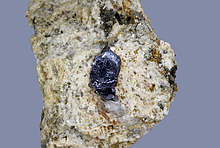Home PageAbout MindatThe Mindat ManualHistory of MindatCopyright StatusWho We AreContact UsAdvertise on Mindat
Donate to MindatCorporate SponsorshipSponsor a PageSponsored PagesMindat AdvertisersAdvertise on Mindat
Learning CenterWhat is a mineral?The most common minerals on earthInformation for EducatorsMindat ArticlesThe ElementsThe Rock H. Currier Digital LibraryGeologic Time
Minerals by PropertiesMinerals by ChemistryAdvanced Locality SearchRandom MineralRandom LocalitySearch by minIDLocalities Near MeSearch ArticlesSearch GlossaryMore Search Options
The Mindat ManualAdd a New PhotoRate PhotosLocality Edit ReportCoordinate Completion ReportAdd Glossary Item
Mining CompaniesStatisticsUsersMineral MuseumsClubs & OrganizationsMineral Shows & EventsThe Mindat DirectoryDevice SettingsThe Mineral Quiz
Photo SearchPhoto GalleriesSearch by ColorNew Photos TodayNew Photos YesterdayMembers' Photo GalleriesPast Photo of the Day GalleryPhotography
╳Discussions
💬 Home🔎 Search📅 LatestGroups
EducationOpen discussion area.Fakes & FraudsOpen discussion area.Field CollectingOpen discussion area.FossilsOpen discussion area.Gems and GemologyOpen discussion area.GeneralOpen discussion area.How to ContributeOpen discussion area.Identity HelpOpen discussion area.Improving Mindat.orgOpen discussion area.LocalitiesOpen discussion area.Lost and Stolen SpecimensOpen discussion area.MarketplaceOpen discussion area.MeteoritesOpen discussion area.Mindat ProductsOpen discussion area.Mineral ExchangesOpen discussion area.Mineral PhotographyOpen discussion area.Mineral ShowsOpen discussion area.Mineralogical ClassificationOpen discussion area.Mineralogy CourseOpen discussion area.MineralsOpen discussion area.Minerals and MuseumsOpen discussion area.PhotosOpen discussion area.Techniques for CollectorsOpen discussion area.The Rock H. Currier Digital LibraryOpen discussion area.UV MineralsOpen discussion area.Recent Images in Discussions
41586
MineralsColumbite Group
6th Dec 2018 12:08 UTCRonnie Van Dommelen 🌟 Manager
I'm doing some reading on the columbite group minerals and have a question.
On MinDat there is a columbite-(Fe) - columbite-(Mn) series, but the formula given for the first of those is FeNb2O6 and the formula for the second is given as (Mn,Fe)(Nb,Ta)2O6. Why is the first not (Fe,Mn)(Nb,Ta)2O6?
6th Dec 2018 13:11 UTCJohan Kjellman Expert
Be certain that these formulas are all simplified expressions of reality.
To me it makes more sense and enough information to list the end-members and note their structure.
You may have heard of the columbite quadri-lateral (google).
a very short and simplified version of it including what i said abovemay look like this:
FeTa2O6 MnTa2O6
(Rutile str.) (columbite str.)
FeNb2O6 MnNb2O6
(col. str.) (columbite str.)
"give me a break - tabs/space does not work" (after fourth ed)
cheers
6th Dec 2018 13:35 UTCPaul Brandes 🌟 Manager
6th Dec 2018 14:06 UTCReiner Mielke Expert
6th Dec 2018 15:24 UTCPavel Kartashov Manager
if you doing some reading on the columbite group minerals, you should to pay more attention to articles with real compositions of these minerals then to look at mindat page.
I don't know English analogues, but good selections of such analyses were given in book of Gorzhevskaya and Ginzburg, A.V. Voloshin monographies or at least in handbook "Mineraly" v.3, pt.2 (all in Russian).
Almost pure end member FeNb2O6 (low-manganoan and almost Ta-free) are quite abundant in many localities worldwide (at least pegmatites of Ural, Ukrainian shield, Southern Siberia, Madagascar, Nigeria, Australia etc.).
Real compositions of some manganotantalites you may to see here - https://www.mindat.org/gallery-2490.html?frm_id=pager&cform_is_valid=1&min=&loc=&u=2490&potd=&pco=&d=&showtype=&photoclass=&phototype=0&checkall=&rockmin=&filtmin=2520&filtcountry=0&loctxt=&keywords=&mycol=&orderxby=1&submit_pager=Filter+Search
For all my practice I met composition close to MnNb2O6 (Ta-free and almost without Fe) only once - in carbonatites of Hongcheon in Southern Korea. What is quite explainable.
Most of columbites-Mn are enriched with Ta, sometimes extremely high enriched. Moreover, most of "tantalites" at a market and in collections (even in museum collections) are in reality high-tantaloan columbites-Mn. It also is explainable, because of exactly this compositions are most abundant in so-call "Ta pegmatites" and often form large well formed crystals and huge masses of kgs weight.
6th Dec 2018 15:29 UTCPavel Kartashov Manager
nagelschmidtite also has formula Ca7(SiO4)2(PO4)2 on the IMA list. Do you know how much P presents in real nagelschmidtites from TL? Read its the first description, and you'll be VERY surprised. I don't understand at all, from where IMA took their formula.

6th Dec 2018 16:17 UTCAlfredo Petrov Manager
6th Dec 2018 17:04 UTCUwe Kolitsch Manager
6th Dec 2018 17:31 UTCPavel Kartashov Manager
6th Dec 2018 17:41 UTCUwe Kolitsch Manager




Mindat.org is an outreach project of the Hudson Institute of Mineralogy, a 501(c)(3) not-for-profit organization.
Copyright © mindat.org and the Hudson Institute of Mineralogy 1993-2024, except where stated. Most political location boundaries are © OpenStreetMap contributors. Mindat.org relies on the contributions of thousands of members and supporters. Founded in 2000 by Jolyon Ralph.
Privacy Policy - Terms & Conditions - Contact Us / DMCA issues - Report a bug/vulnerability Current server date and time: April 20, 2024 03:55:41
Copyright © mindat.org and the Hudson Institute of Mineralogy 1993-2024, except where stated. Most political location boundaries are © OpenStreetMap contributors. Mindat.org relies on the contributions of thousands of members and supporters. Founded in 2000 by Jolyon Ralph.
Privacy Policy - Terms & Conditions - Contact Us / DMCA issues - Report a bug/vulnerability Current server date and time: April 20, 2024 03:55:41











